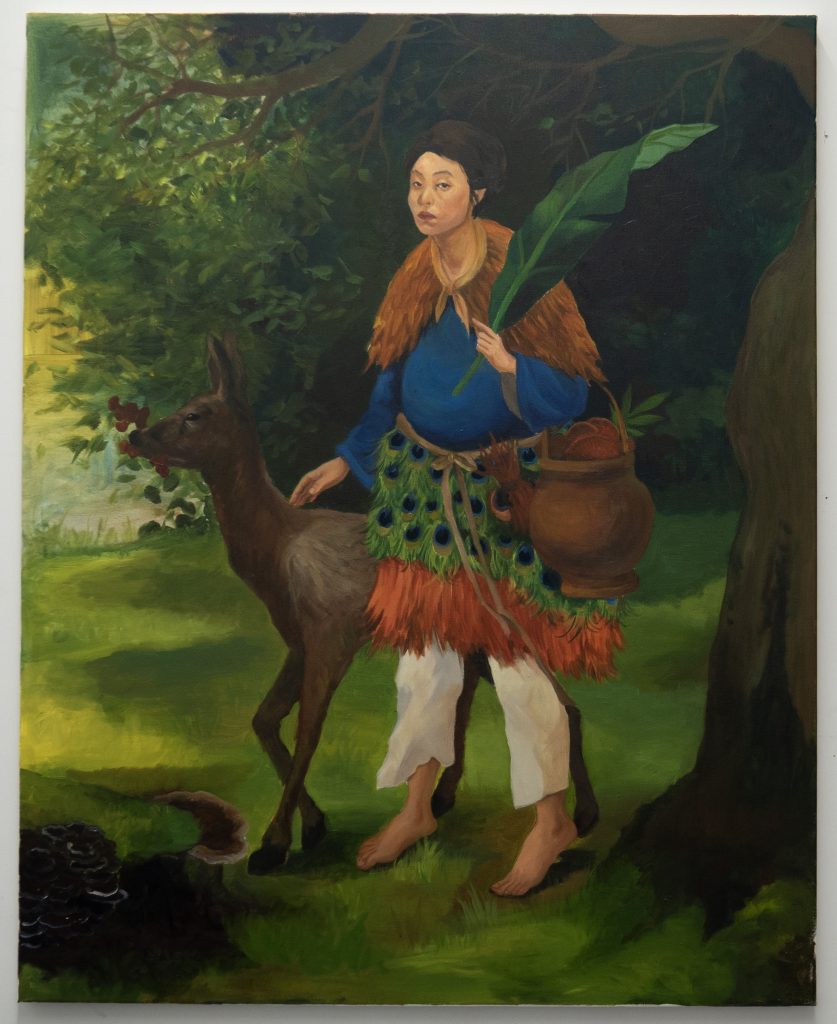Mago, her journeys to the west, 2025. Oil on canvas, 80cm × 100cm
Mago or Magu (in Chinese) is a goddess (Korea) or an immortal being (China), that appears in East Asian historical and religious texts, literature, folklore, folksongs, and art. The logographic meaning of 麻姑 (“Magu”) is given as “Hemp Maiden” or “Hemp Goddess.”
This work is a reinterpretation of Magocheji, a small painting (19.0×21.9㎝) by an artist named Seok Kyung (15th century, Joseon Dynasty). In Magocheji, Mago appears as a goddess who rules the world, much like in earlier myths. She is also portrayed as a nurturing figure, shown carrying a deer while searching for reishi mushrooms. One of the three primordial deities known as Samshin (three gods), Mago is said to have borne descendants without a partner and to bless her offspring with new life. Her gathering of reishi—the legendary “mushroom of immortality”—underscores her role as a giver of eternal vitality.
In the original painting Magocheji, the face of Mago is erased. By changing the face of the woman to the artist’s own face and the background to that of the artist’s immediate natural environment, she brings back Mago into the contemporary time, in her own context of maternity, the power of female knowledge and experience.

